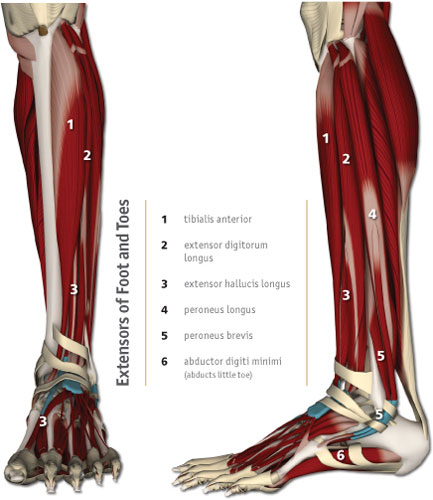
The lower leg and foot form the foundation for many Yoga poses. For this reason, it is important to have a functional understanding of the major muscles of the lower leg and foot. Minor Chakras in the foot contribute to illuminating the first and second major Chakras.
For ease of understanding, it is useful to divide the many muscles in this region into groups identified by their function.
The major functions include flexing, extending, everting, and inverting the foot. In the foot itself, the muscles are categorized into flexors and extensors of the toes.
These illustrations demonstrate the major muscles performing these actions.

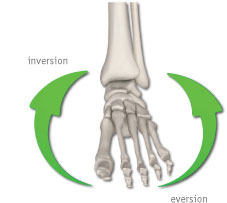
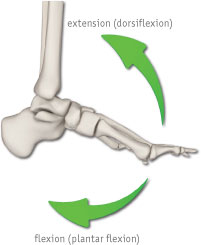
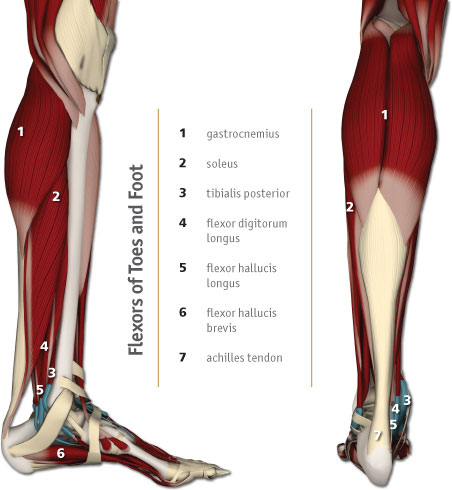
Sarvangasana
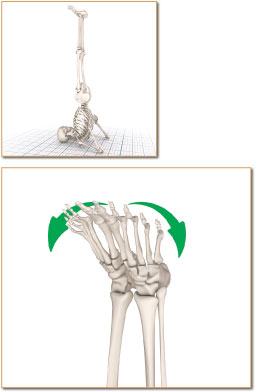
Utthita Trikonasana
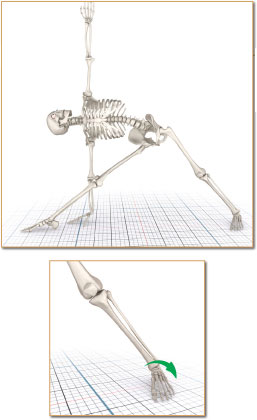
Purvottanasana
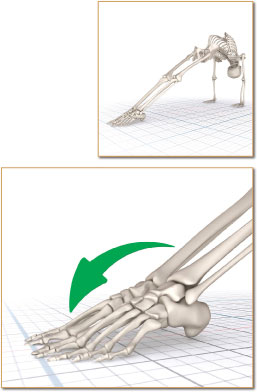
The gastrocnemius is a two-headed fusiform muscle originating from the backs of the femoral condyles and inserting on the calcaneus (heel bone) via the Achilles tendon. Its primary action is plantar flexion of the foot. The gastrocnemius also acts synergistically with the hamstrings to flex the knee during the push-off phase of walking, propelling the body forward.
Tightness in the gastrocnemius limits extension of the knee (as with tightness in the hamstrings). Facilitated stretching of the gastrocnemius is an effective method to break through limitations in forward-bending postures where the knees straighten.
Use the forward bend Paschimottanasana to bring the gastrocnemius out to full length, and then resist plantar flexion of the feet by pulling them toward the head with the hands. Hold this for a few moments, and then extend the knees and draw the feet upward.
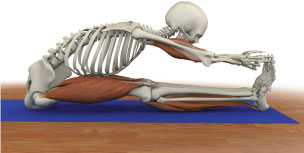
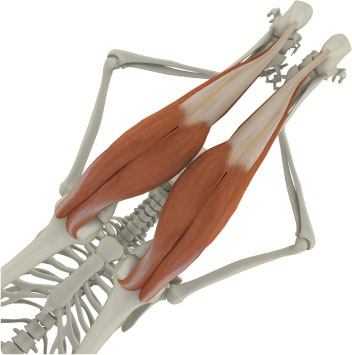
This view from the floor illustrates the polyarticular nature of the gastrocnemius and how it originates from the posterior femoral condyles, crosses the knee, and inserts on the calcaneus (via the achilles tendon).
Paschimottanasana illustrates stretching the gastrocnemius by contracting the quadriceps to extend the knees. The hands dorsiflex the ankles.